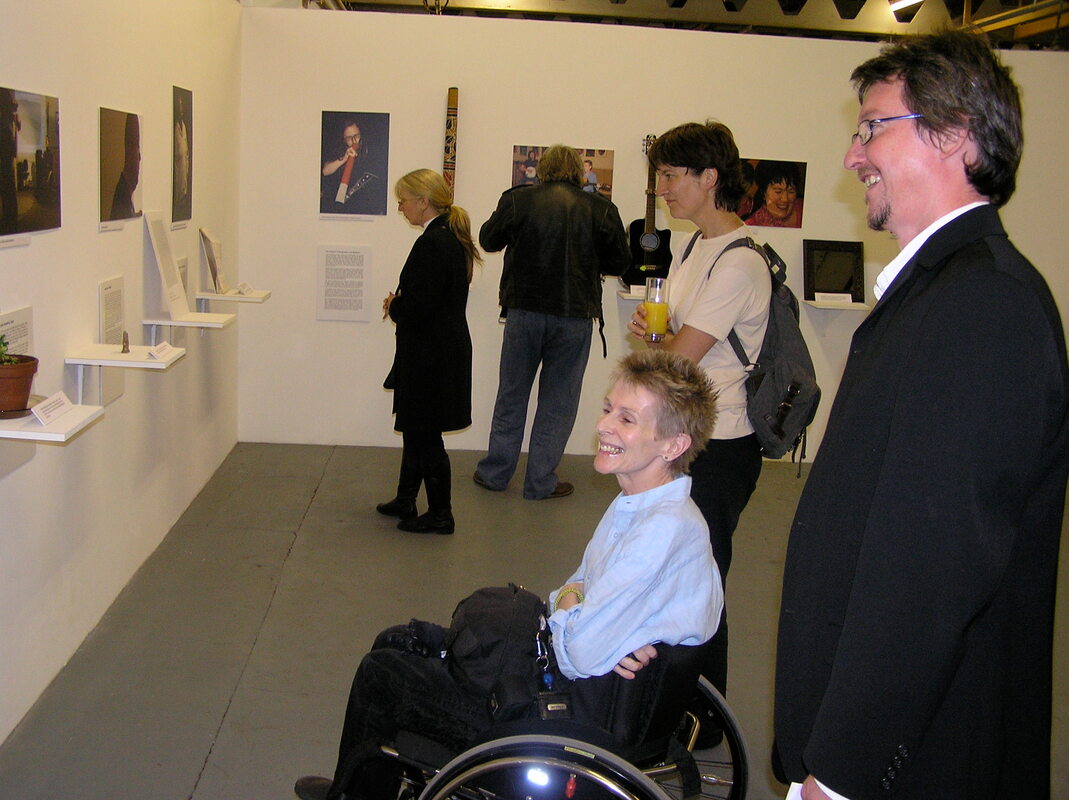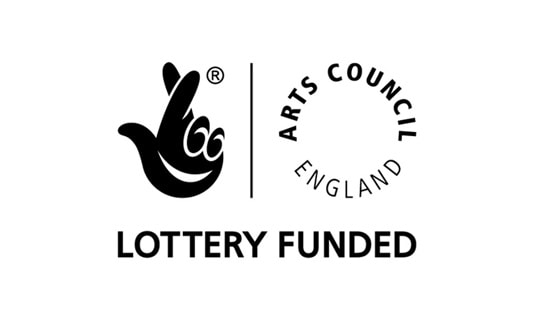About On Whose Shoulders We Build

Image description - a photograph of people at the 21 - The Last Avant Garde Exhibition at Waygood Gallery by Fisheye. There are a series of portraits of disabled artists on the wall, each with a small shelf and an object they have gifted to the exhibition which is significant to them. In the forground of the image are Fisheye, a white man in his forties wearing a black jacket, white shirt and dark rimmed glasses. He is smiling and chatting to the late, and very great, Lindsay 'Spiky' Carter who is a white woman wheelchair user, smiling and looking at the exhibition. She is in her forties and has spiky hair. Lindsay is wearing a pale blue shirt, black trousers and has a black bag on her lap. Lindsay was a writer, musician, artist and an amazing activist.
About On Whose Shoulders
There is so much history of disability arts activity in the North East but much of it remains hidden. Black Robin has an extensive collection of filmed and photographed work by disabled artists and didn’t think it should go dusty on the shelf, and wanted to pay tribute to all those who have made a difference to the lives of disabled people through the arts in our region. He has begun to archive it and share an initial narrative of the community’s history, along with key figures from the movement. From a dynamic community of creative people it’s essential that we preserve the heritage and also promote the disabled artists and activists creating amazing change today.
What is Disability Arts?
Disability Art is art in any artform made by disabled people about the experience of disability. The Disability Arts Movement in the UK developed alongside and out of the Disability Rights Movement in the 1970s and 80s. The Movement has changed and evolved over the last five decades, moving from individual artists and small groups to a set of regional disability arts fora and a National Disability Arts Forum, all of whom were independent of each other but forged several alliances, hosting regional and national events, support for disabled artists and campaigning for equality in art and culture, through to a changed world today. The Disability Arts Movement was affected by gradual changes in funding for the regional fora in the 2000s, with only DADA in Liverpool, DASH (Disability Arts Shropshire) and Shape London remaining. The debate around what kind of work comes under the disability arts umbrella has shifted considerably since then. These days there are lots of references to disabled-led art, in which all the lead creatives are disabled people, and where the subject matter is largely about disability as a social phenomenon but not exclusively. Not all art made by disabled people is about disability, but many of the same access barriers are there for all disabled artists. The campaign for equality is still very much needed to create equality of opportunity but also equal and relevant representation of disability identity and culture in the arts.


